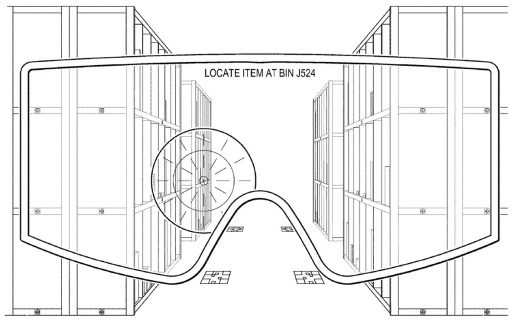Primed for Disruption: 12 Wacky Amazon Patents Fueling the Future of Fulfillment
— July 19, 2019
With 2018’s Prime Day moving over 100 million products (expected to grow this year) — fast and reliable fulfillment is top-of-mind for the world’s largest retailer. And it’s no surprise Amazon’s so patent-happy when it comes to improving logistics.
We’ve rounded up 12 of the wackiest ideas Amazon’s patented (so far) that could forever transform fulfillment as we know it. While there’s no guarantee they will see full fruition, these filings give us a glimpse into the Jestons-like world of future-fulfillment.
Optimizing Delivery
Anticipatory shipping
Amazon’s Anticipatory Shipping patent (filed in 2011) is the foundation for a wide range of disruptive fulfillment innovations.
Anticipatory shipping uses predictive analytics to move inventory to geographies and locations closest to where it’s most likely to be purchased. Predictive algorithms leverage regional trends in search, browse and purchasing as well as items sitting in carts and wishlists to determine when and where orders will likely be placed. Items or groups of items can be pre-packaged and shipped to stationary or mobile warehouses in these regions.
Getting pre-packed orders as close to the customer as possible reduces transport costs and supports same-day and even same-hour delivery (by human, robot or drone).
Airborne fulfillment centers (AFC)
Anticipatory shipping aims to reduce last-mile delivery and support same day or even same hour fulfillment. One proposed way of storing and deploying packages is the airborne fulfillment center (AFC) — a FedZeppelin, if you will.
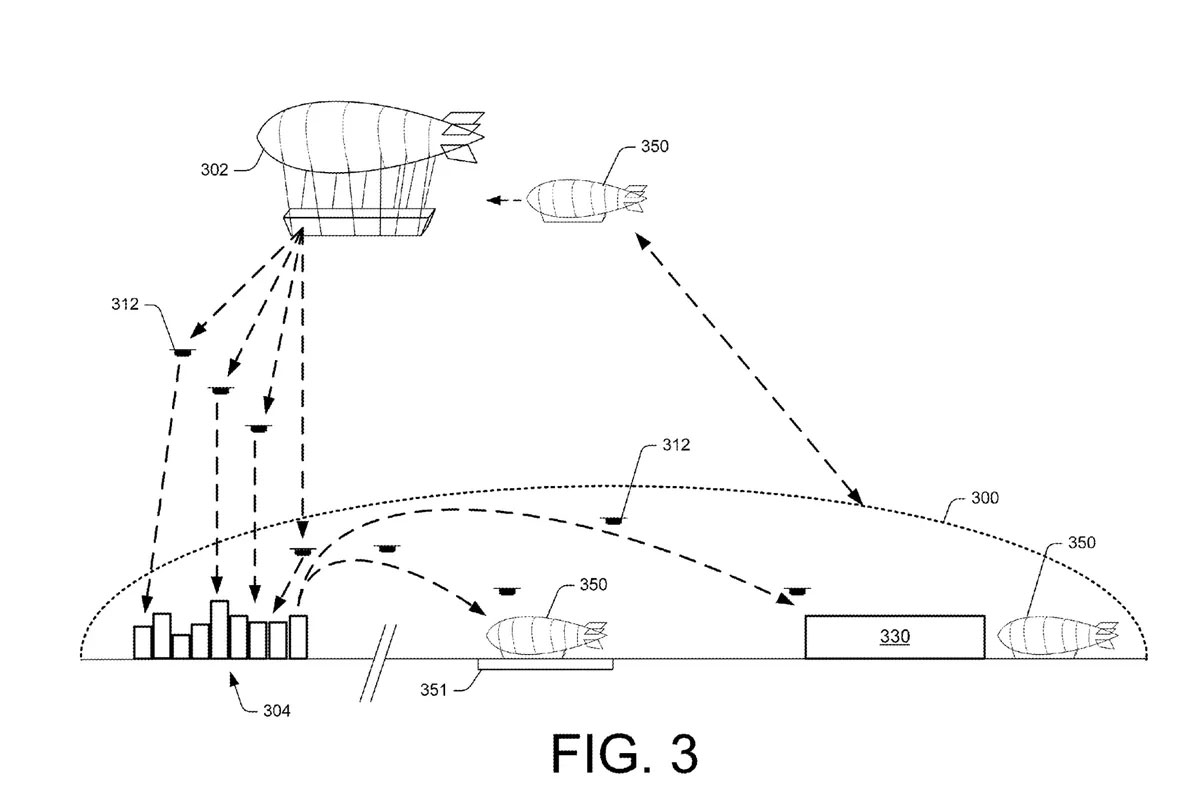
At 45,000 feet, helium-powered blimps hold goods and drones that can be stationed near urban centers or stadiums, beaches, fair grounds and anywhere a surge of demand is expected at a given time. For example, temperature-controlled drones can carry food and beverages to offices, sporting events, festivals or wherever people get the munchies. AFCs may also be used to display advertising.
To replenish inventory, the patent outlines “shuttles” that could carry drones and people from the ground to the AFC. And to optimize delivery, “smart drones” share data about weather, wind and delivery routes between each other in real-time.
Parachute delivery
Dropping parcels from the sky carries risks of damage, especially for products like electronics and…nacho chips. Naturally, Amazon has patented parcel parachutes that can slow parcels’ descent and minimize breakage. A package’s trajectory may be controlled by pneumatic actuators, electromagnets and spring coils controlled by its drone, which hovers nearby should the parcel veers off course due to wind or other factors.
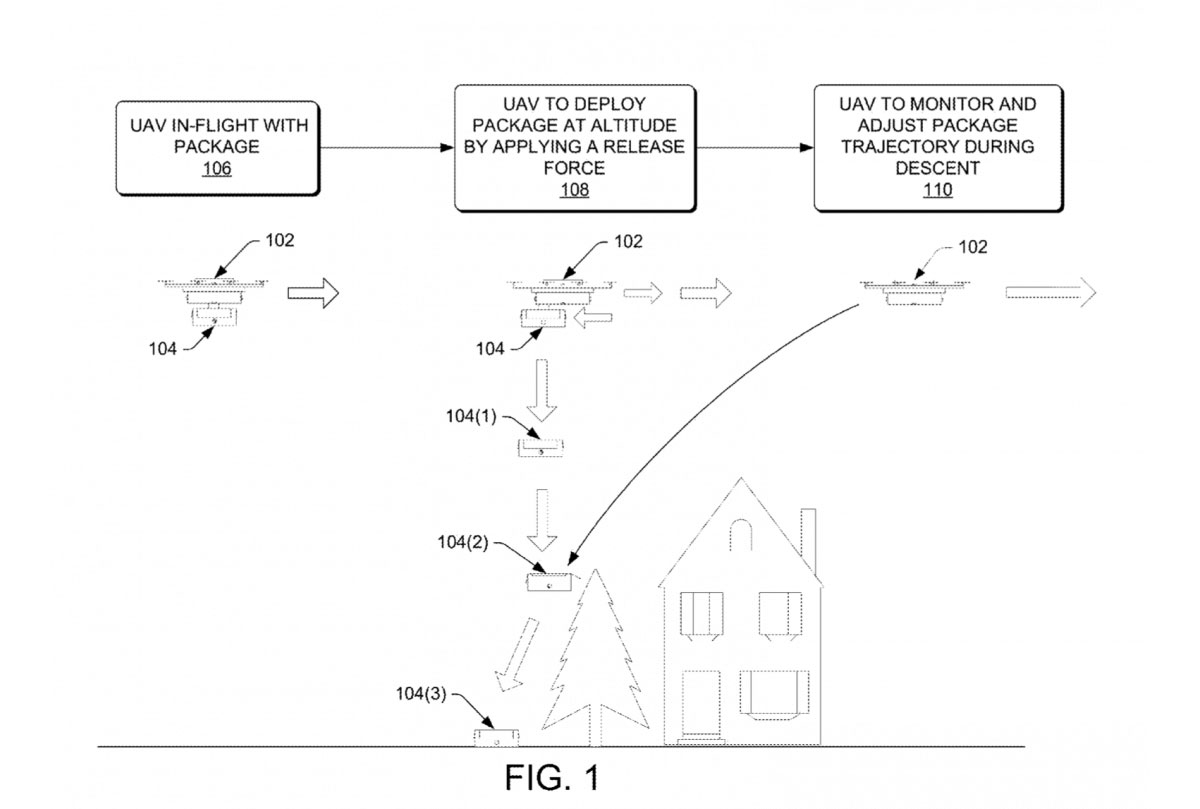
One proposed method for the Aerial Package Delivery System bakes parachutes into shipping labels, complete with cords, sensors and even shock absorbers to ensure soft and precise landings. Labels will be equipped with appropriate chuting based on package weight and size.
Parachuting parcels saves drone battery life and allows them to stay at high-hover, protecting them from theft and damage.
Mobile containers
Amazon warehouses may soon ride the rails. Intermodal vehicles (shipping containers) can be transferred from ships to trains to trucks. Wireless networks transmit orders to these micro-fulfillment centers, signalling robotic arms to load goods onto delivery drones that fly out the top of the containers.
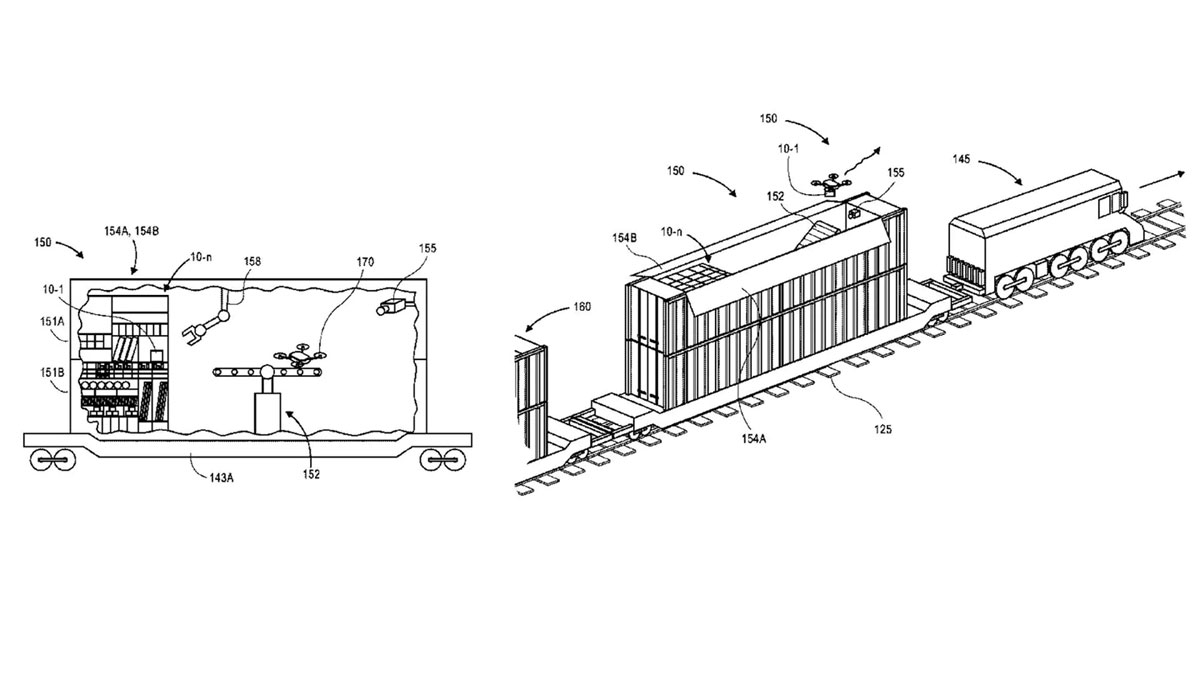
Pop-up warehouses
Like pop-up shops, transient warehouses stay on-the-move and can be placed in locations more convenient for last-mile delivery trucks than large centers in the outskirts of town — for example, parking lots or under the bridge downtown. Combined with anticipatory shipping data, Amazon could uber-optimize transit times within specific locations when order density is expected to spike — especially helpful for perishable items and those that require temperature control.
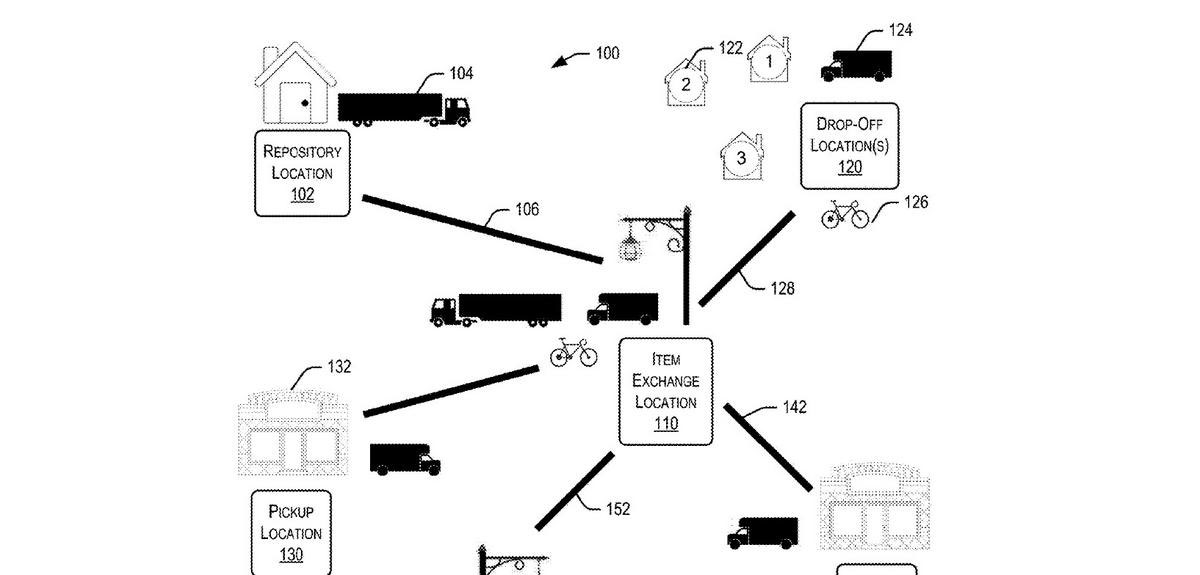
The beehive / drone airport
Most of today’s large fulfillment centers lie on the outskirts of major metropolitan areas. Amazon would like to see warehouses built up, not out, as multi-level “beehive” structures within the city.
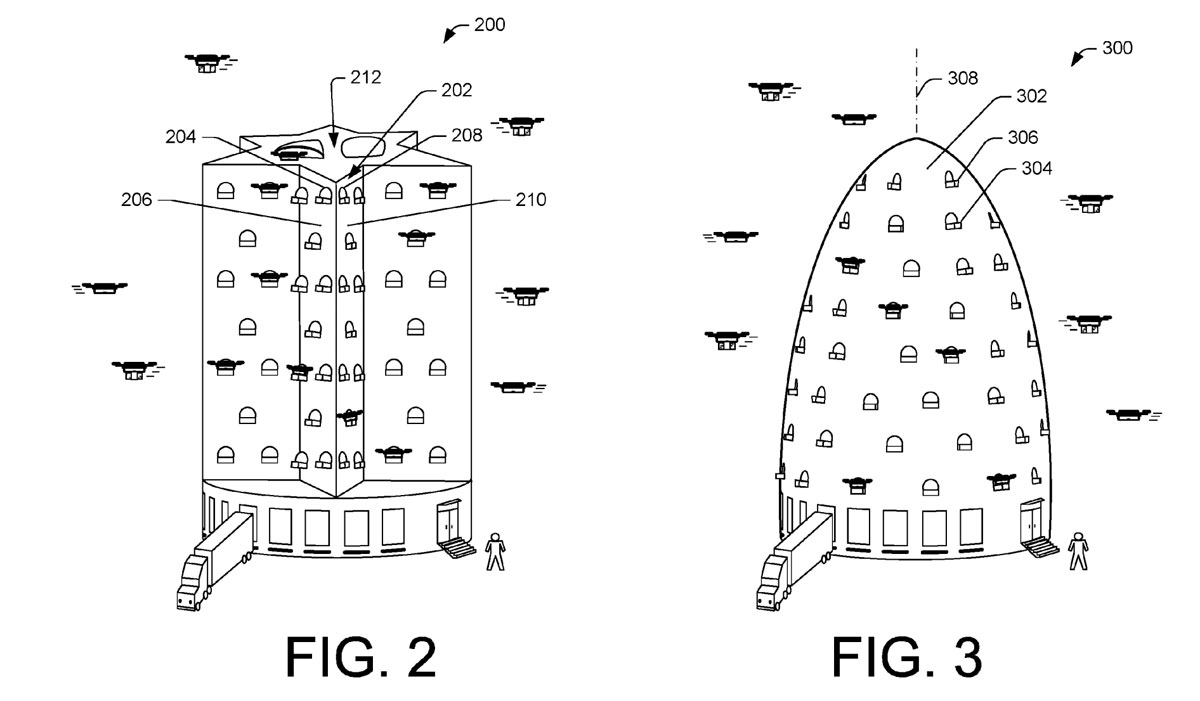
The hives may hold humans and robots, and will certainly house drones as worker bees — the unmanned aircraft could fulfill hundreds of thousands of same-day deliveries.
El Chapo tunnels
Should drone airports fail to fly, Amazon has a back up plan. Through a matrix of underground tunnels, conveyor belts and pneumatic tubes could shuttle packages directly to warehouses, airports, railways, locker storage sites and even consumers’ homes.
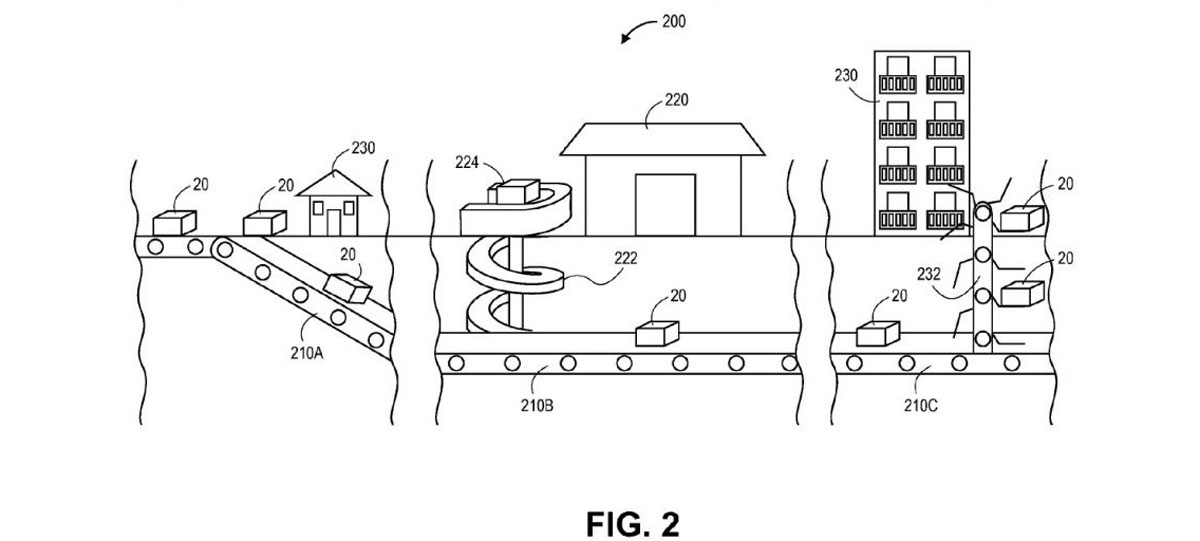
Robot roommates
To solve the current problem of packages left on doorsteps (and the future problem of no one home to catch a drone-drop), Amazon’s AGV (autonomous ground vehicle) patent proposes retrieval robots stationed within homes and other buildings. Equipped with sensors and GPS, these bots can fetch packages from nearby trucks, drones, lockers and more.
The patent suggests multiple robots could be summoned within a neighbourhood to a single delivery truck to maximize efficiency. The bots would be notified in advance of the truck’s arrival.
I suspect Amazon sees retrieval robots as one way to eliminate courier and postal service costs entirely. Combined with smaller, self-driving mobile fulfillment stations and drones, Amazon can own its fulfillment journey end-to-end.
Optimizing pick-and-pack
Underwater storage
Picking and packing multiple items in a large warehouse requires a lot of walking, consuming precious time. Standard warehouse shelving systems also use space very inefficiently.
Amazon’s Aquatic Storage Facilities patent aims to solve both these problems. Liquid-filled environments (water or other viscous substance) allow for packages to be stored and retrieved in more efficient and compact way. Depth control devices determine how buoyant packages are, allowing them to be stacked in layers.
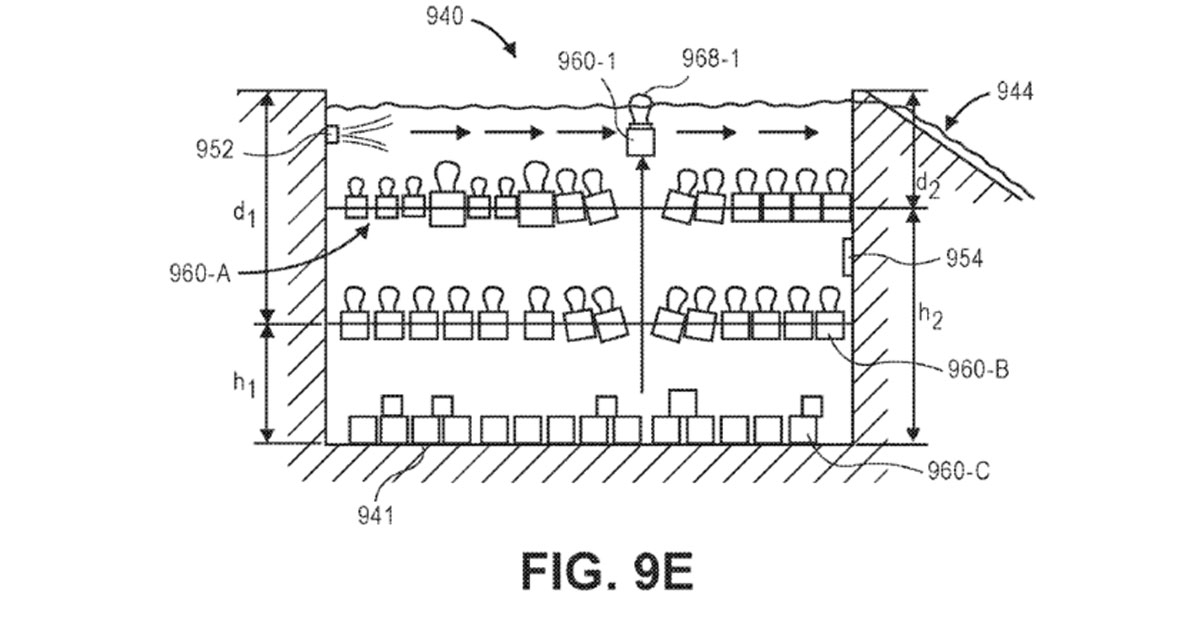
Tanks feature inlets and outlet chutes for packages, sonars, jets, conveyors and “flexible bladders” to buoy parcels to the surface. When a package is ready to surface, sonars emit an “acoustic tone” that triggers an inflatable mechanism within bladders containing their own air tanks and computer processors to communicate with sonar.
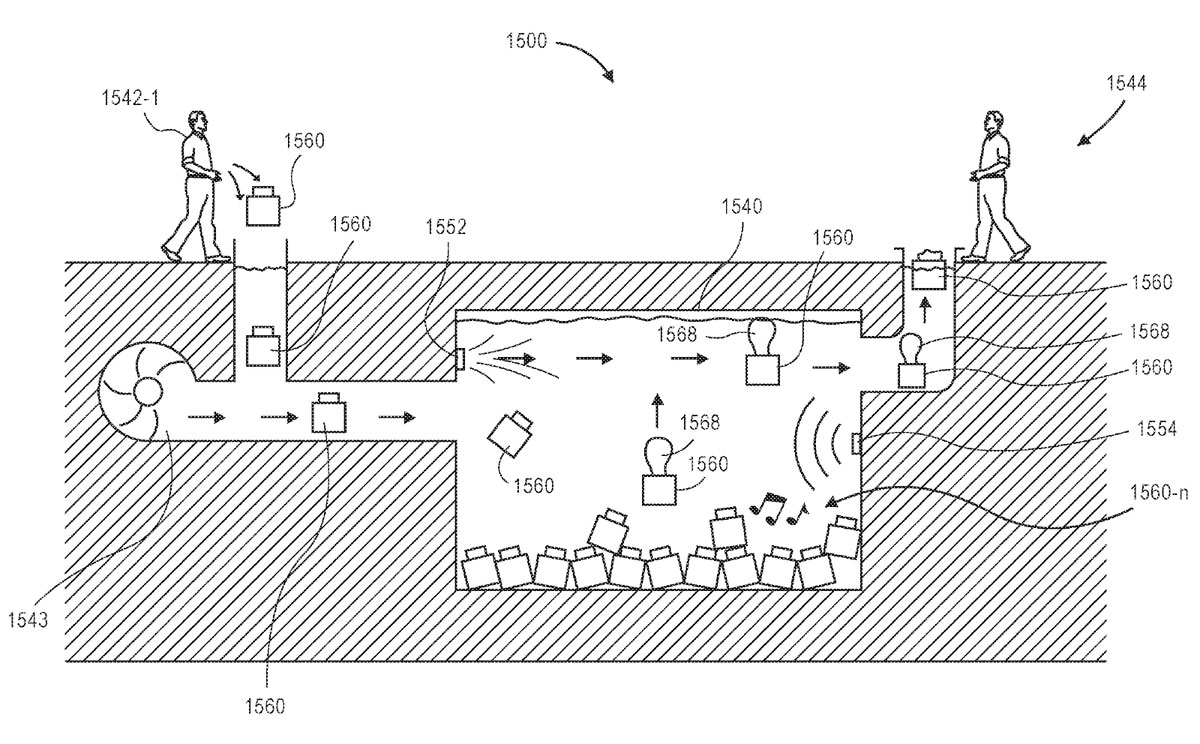
Ultrasonic wristbands
Amazon hopes to pair ultrasonic devices near inventory bins and wearable wristbands to help warehouse workers store and retrieve items more accurately. Incoming inventory is typically placed in bins before shelving, which can be difficult to keep track of in large warehouses. Locating bins takes up a significant amount of time — especially when they look the same and may change contents day-to-day.
The Wearable Haptic Feedback System equips workers with wristbands that track their movements around the warehouse and monitor hand movements, including timestamps for given actions. Ultrasonic pulses guide workers to inventory bins and provide instant “buzzer” feedback if they make errors placing or pulling product.
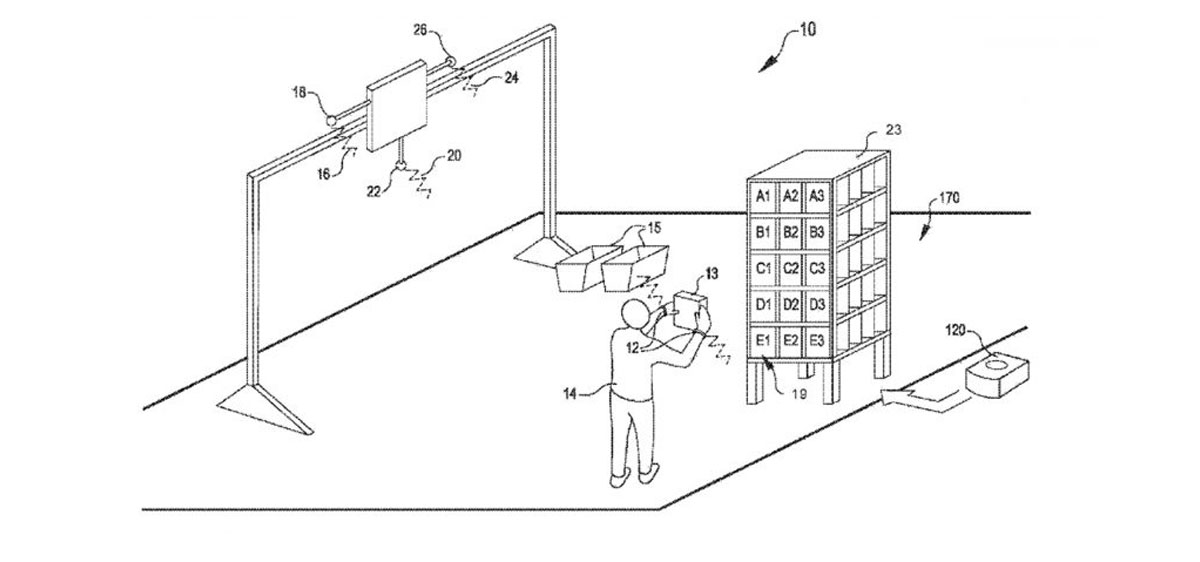
Some view the haptic track-and-shock system as draconian. Amazon’s defense is wearables replace handheld scanners routinely used to check inventory and fulfill orders, and relieve workers’ eyes from computer screens. “Like most companies, we have performance expectations for every Amazon employee and we measure actual performance against those expectations, and they are not designed to track employees or limit their abilities to take breaks.”
AR spy goggles
Amazon has also patented augmented reality goggles for use in training and to provide turn-by-turn directions and more for both human and robot workers. Despite their cool-factor, AR goggles have drawn even more criticism than haptic wristbands. With the potential to track walking speed, dwell time and eye gaze at all times, folks wonder whether the glasses are truly intended for optimization or surveillance.
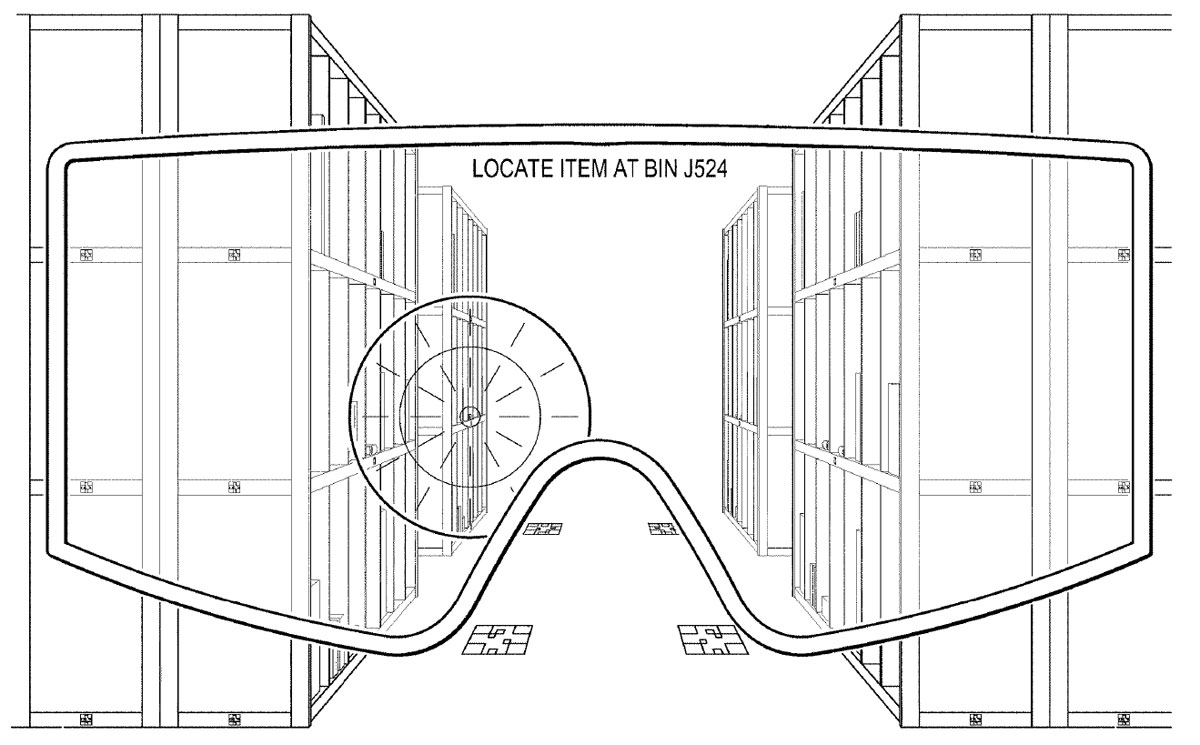
Rock ‘em toss ‘em robots
Robotic Tossing of Items in an Inventory System equips sci-fi robots equipped with “sensor packages” can detect product attributes like weight, size, shape, material, RFID serial numbers and more. Based on these attributes, the robot can determine the best way to toss the item safely and accurately.
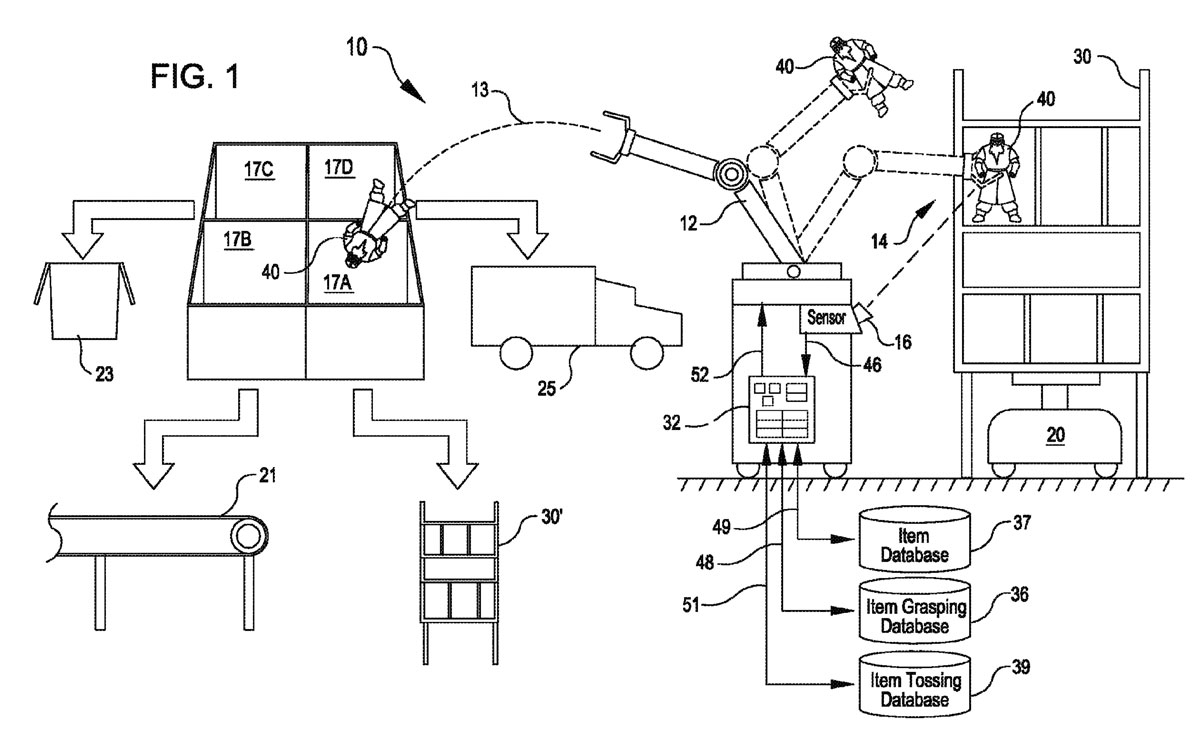
Jury’s out on how realistic these hair-brained innovations are, and how likely Amazon is to bring them to life. If anything, they’re a hedge they can leverage should they hold any value or competitive advantage.
How will future-fulfillment impact you?
As a consumer
As an Amazon shopper or Prime member, expect your orders to ship even more quickly and efficiently thanks to optimized warehousing and delivery. As a citizen, you may find working around drones and retrieval robots is a nuisance.
As a business
With Amazon aggressively expanding its B2B marketplace, B2B buyers and procurement departments can take advantage of faster and potentially more reliable delivery. These innovations may attract even more suppliers to the marketplace, looking to take advantage of these perks.
As a merchant
Innovative warehousing and fulfillment infrastructure makes FBA (Fulfillment by Amazon) and even more attractive option for retailers. As customers increasingly demand same-day shipping, using other 3PL solutions may quickly become a competitive disadvantage. We may see Amazon licensing its patented tech, operations and logistics infrastructure to third parties such as FedEx and UPS, or we may see these slow-to-adapt companies die off.
While many of these patents sound like pure science fiction, we can’t wait to see how future-fulfillment will impact digital commerce.
Digital & Social Articles on Business 2 Community
(13)

